|
|
|
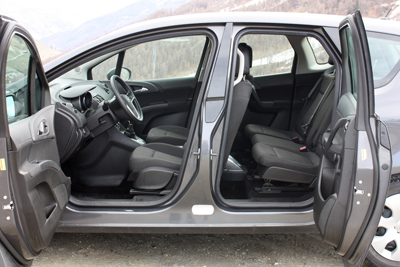
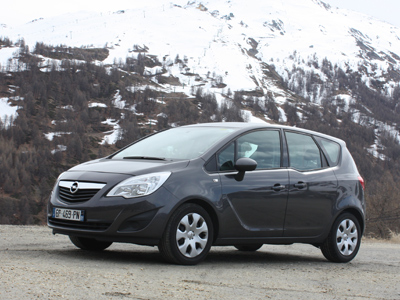
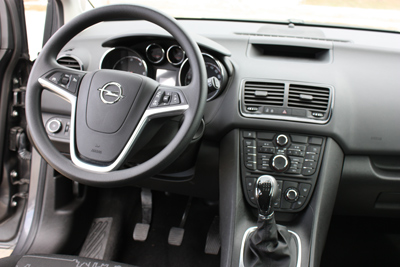
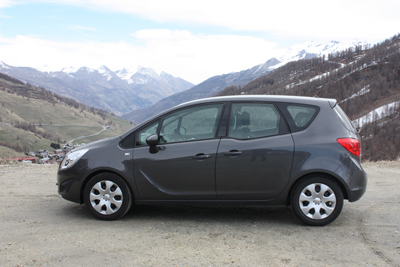
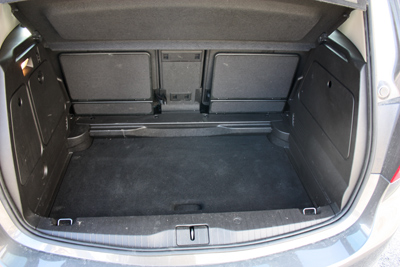
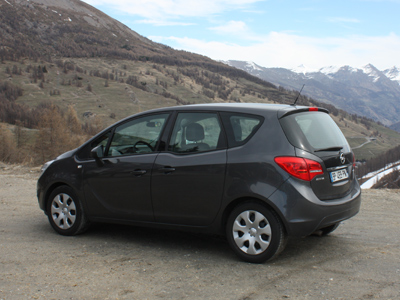
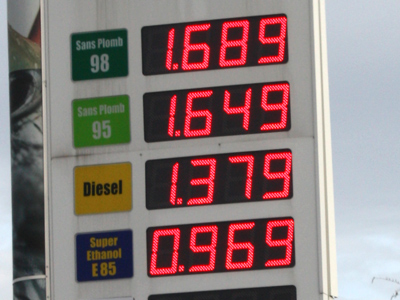 French fuel prices shown in Euros.
French fuel prices shown in Euros.
|
|
|
Opel Meriva road test
by Mark Walker
11th April, 2012
Home >
Road Tests >
General Motors >
Opel
Related stories:
Opel confirmed for Australia
11th January, 2011
GM's Meriva
Concept To Make Geneva Debut
7th February, 2008
As a European motoring experience, we drove an Opel Meriva hatch over
Easter. This second-generation Meriva has been on the market in Europe since mid-2010. It isn't intended for an
Australian release.
However, Opel are set to commence sales in Australia during the third quarter this year. The initial model line-up
will include the Corsa, Astra and Insignia models. Next Car expects Opel's small SUV, the Mokka, to be added to
the Australian range in 2013.
The Opel Meriva we drove was the "Enjoy" version fitted with a 1.7 litre diesel engine and a six-speed manual
transmission.
The 1.7 litre four-cylinder turbo-diesel engine produces 81 kW of power and 280 Nm of torque at 4,000 rpm. This
means fairly average acceleration and a factory-claimed 0-100 km/h acceleration time of some 11.8 seconds. Around town
the manual transmission and small diesel work well enough. There is a shift warning light on the dash to recommend
shifting up gears – a feature starting to become common place among vehicles seeking to claim good fuel efficiency. This
is not a car for people who crave power and acceleration but the Opel Meriva does strike a good balance between power and
economy.
The diesel is Euro 5 compliant and Opel claim it can achieve a combined fuel economy rating of 5.3 litres per 100 km
and emissions of 139 grammes per kilometre. It certainly felt like a long time between trips to the service station. Over
a distance of 829 kms the Meriva returned fuel consumption of 6.5 kilometres per 100 kilometres travelled. This included
about 200 kilometres at freeway speed of 130 km/h (the legal limit on French freeways) with the majority of driving on
the roads of the French and Italian Alps east of Grenoble including many mountain climbs.
The Meriva performed admirably on big mountain climbs including the twisting, steep incline from the valley base at
Bourg d'Oisans up to the famous ski resort and Tour de France destination of Alpe d’Huez. It’s competent on steep hills
with decent pulling power in second and third gears. However, on the bends I always seemed to be looking around the thick
"A" pillar which connects with the body well in front of the driver.
The Meriva wasn’t agile through bends, however for a family hatch it handles reasonably well. It rides on 16” steel
wheels with plastic hub caps – alloys are optional on this version. The braking is solid – even at high speed and the
brakes certainly got a work out when descending the many big climbs. We stuck to low gears to minimise braking but with
the many hairpin turns and sometimes erratic driving of others, the brakes were thoroughly tested.
The claimed top speed is a surprising 182 km/h. The Meriva was generally quite comfortable at 130 km/h on the motorway
without being overly noisy. However, it was knocked about by some big gusts at the speed limit.
The Opel Meriva is marketed as a flexible family car. Its main gimmick is the rear-hinged back doors (refer
accompanying image). Opel call them FlexDoors. Opel claim they are the first volume manufacturer to use this design on a
production car and I expect many of you will argue they are not the first. Nevertheless, the rear-hinged doors do
function well and you quickly become used to the car being equipped this way.
Opel suggest the FlexDoor configuration makes it easier to buckle children into the rear seats and we agree thanks to
the increased access provided by the wider angle. These rear doors open to an angle of 84 degrees which considerably
exceeds conventional doors that open on a 67 degree angle. It’s also less effort if you are getting out of the front and
need to open the rear door immediately behind you as there is no real need to move your body towards the back of the car
before opening the door.
Inside the Meriva is of reasonable standard considering the level of the market in which it is competing. The
switchgear feels solid and the plastics are still looking like new after close to 20,000 kms on the 'clock'. The Meriva
Enjoy is a little low on comfort features. For example this spec gets power front windows only – the rears are manually
operated which seems to fly in the face of Opel’s flexibility claims. It does come standard with an electric park brake,
cruise control and air conditioning. The fan speed of the a/c was a little strange. On start up, the fan would come on at
maximum speed – understandable if this were climate control set to automatic – and this could only be reset by changing
the fan speed manually. This I expect was a fault - a rather annoying one at that - which can be rectified.
No Bluetooth unfortunately on this spec. Despite being not fitted, the phone buttons are still on the steering wheel
which is frustrating. Music can be streamed in via an auxiliary cable however no USB connection is available.
The centre console has been turned into another gimmick called FlexRail. This feature consist of rails on each side of
the centre console which form tracks for the centre storage bin which doubles as an arm rest on the high rail. This can
be moved forward or backward along the rail to suit your preference. On a lower rail, there is a tray containing a cup
holder which can also be moved forward or backward. Without wanting to point out the obvious, if the lower tray/cup
holder is below the storage bin then the cup holder becomes useless. This system feels a little cheap as quality is poor.
In practice, it’s not likely to benefit many people as most people will leave it in one position.
The seating is comfortable and there is good space for both front and back passengers. Only two adults can fit in the
back seats comfortably.
The rear seating is flexible in that each seat can be folded down separately to make a two, three, four or five
seater. The rear seats can also be moved forward for extra boot space without needing to fold the seat – a feature common
in the European small car market nowadays. The boot size is a reasonable 400 litres with the rear seats and cargo shelf
in place. With the seats folded and cargo shelf removed the space increases to a generous 1,500 litres.
The driving position is slightly raised when compared to a typical compact hatch with visibility being much the same.
The rear visibility is acceptable when driving although parking was tricky thanks to the shape of the rear side windows.
There is no rear park assist on this spec. Thanks to the angle of the bonnet, you can’t see the front of the car either
so this means a little more to think about when parking in tight spaces. Also disappointing was the vibration of the rear
vision mirror at highway speeds.
The Meriva has achieved the highest possible safety rating of five stars from Euro NCAP. Safety features on this model
include front driver and passenger airbags, curtain airbags, anti lock braking (ABS), electronic stability control (ESP)
and a pedal release system to protect the driver in a frontal impact.
The Opel Meriva is manufactured in Zaragoza, Spain.
It isn't anticipated that this model will ever make it to Australia. Holden persevered with the slightly larger,
7-seat Zafira before giving up some years ago. Opel Australia hasn’t announced whether the all-new Zafira, which was
recently released in Europe, will make it to Australia.
For curiosity purposes, the Opel Meriva Enjoy 1.7 CDTI manual is priced from €20,350 (excluding on-road costs) in
France. The vehicle driven had optional metallic paint costing €500. At recent exchange rates, €20,850 equates to around
AUD $26,500 (remembering that no on-road costs are included in this conversion).
Stay tuned to Next Car for further particulars on Opel coming to Australia later this year.
More Opel News .....
here.
General Motors News .....
here.
Top of page
|